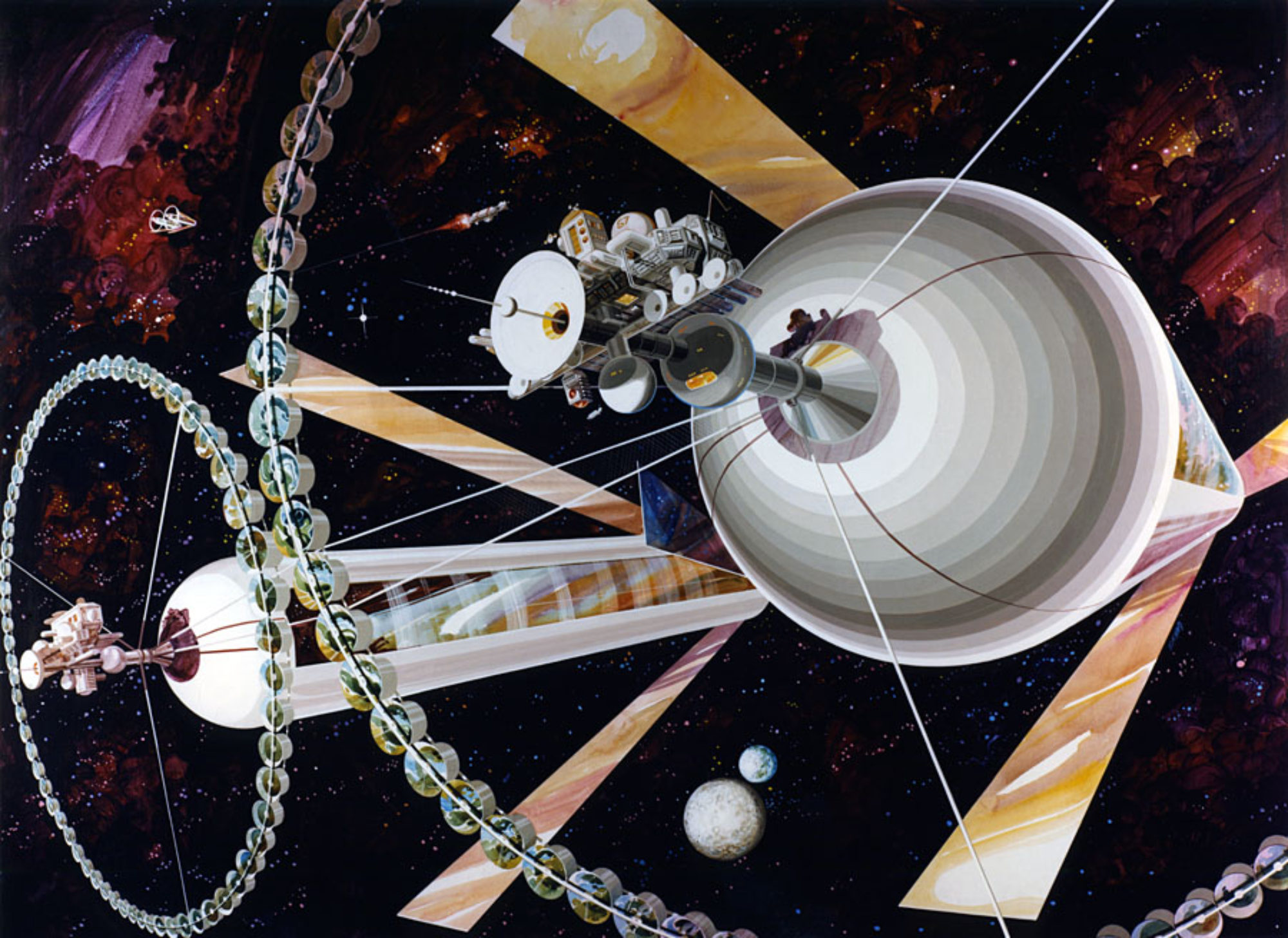
The European Space Agency (ESA) recently published a report on a design study of an inflatable lunar habitat. The work was done by Austrian based Pneumocell in response to an ESA Open Space Innovation Platform campaign. The concept utilizes ultralight prefabricated structures that would be delivered to the desired location, inflated and then covered with regolith for radiation protection and thermal insulation. The main components of the habitat are toroidal greenhouses that are fed natural sunlight via a rotating mirror system that follow the sun. Since the dwellings are located at one of the lunar poles, horizontal illumination is available for most of the lunar night. Power is provided by photovoltaic arrays attached to the mirror assemblies. During short periods of darkness power is provided by batteries or fuel cells.

The detailed system study worked out engineering details of the most challenging elements including life support, power sources, temperature control, radiation protection and more. The greenhouses would provide sustenance and an environmentally controlled life support system for two inhabitants recycling everything. The authors claim that “…it appears possible to create in the long term a closed system…” This remains to be validated.
Inflatable space habitats have many advantages over rigid modules including lower weight, packaging efficiency, modularity and psychological benefit to the inhabitants because after deployment, the interior living space is much larger for a given mass. Several organizations and individuals have already begun to investigate inflatable habitats for lunar applications. The Pneumocell study mentions ESA’s Moon Village SOM-Architects concept which is a hybrid rigid and partly inflatable structure. Also referenced is the Foster’s and Partners Lunar Outpost design which envisions a 3D printed dome shaped shell formed over an inflatable enclosure.

SSP previously covered another hybrid lunar inflatable structure designed by Rohith Dronadula. This design combines a collapsible rigid framework with an inflatable dome, can be autonomously launched from Earth and deployed through telepresence.

The Pneumocell report concludes: “A logical continuation of this study would be to build a prototype on Earth, which can be used to investigate various details of the suggested components … ” Such an approach would be relatively inexpensive and could inform the future design of flight hardware.
Speaking of ground based prototypes, The Space Development Network has been exploring inflatable structures for habitats on the Moon for some time. Doug Plata, president of the nonprofit organization working to advance space development hopes to display an inflatable version of his InstaBase concept at BocaChica, Texas when SpaceX attempts its first orbital launch of Starship, hopefully within the a year or so. When comparing his design to Pneumocell’s, Plata says in an email to SSP, “One difference is that we have the modules directly attached to each other and so avoid the mass of those connecting corridors.”

In reference to the greenhouse designs, Plata continues: “As for the GreenHabs, they have a pretty interesting design to take advantage of direct sunlight. We address the shielding conceptually by fully covering the GreenHabs and then use PV solar drapes and transport the electricity into the GreenHabs via wires. By converting sunlight to electricity to LEDs, more surface area of plants can be grown than the surface area of the solar panels powering them. This is due to the full spectrum of the sun being converted to only those frequencies that plants use.”
It is great to see such creativity and variety of designs for abodes on the Moon. When reliable transportation systems such as Starship blaze the trail, we will be ready with easily deployable, safe and voluminous habitats for lunar settlements.





